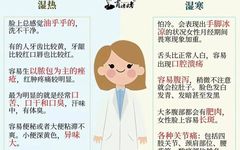
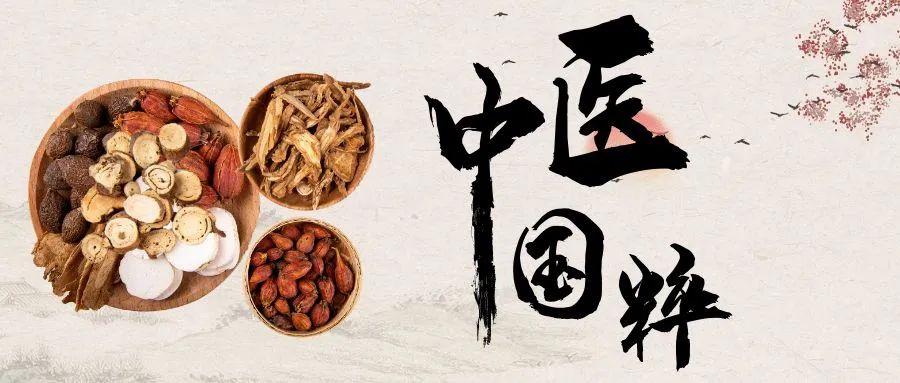
Qu Shi (Dispelling Dampness): A general term for eliminating dampness evil, including Hua Shi (Transforming Dampness), Li Shi (Draining Dampness), and Zao Shi (Drying Dampness).
Zao Shi (Drying Dampness): Using bitter herbs to eliminate dampness evil, suitable for dampness rising upwards, as bitterness is associated with descending.
Hua Shi (Transforming Dampness): Using aromatic herbs to eliminate dampness evil, suitable for dampness in the upper jiao and spleen-stomach, as aromatics enter the spleen.
Shen Shi (Permeating Dampness): Using mild-tasting herbs to drain dampness.
Li Shi (Draining Dampness): Using diuretic herbs to expel dampness evil through urination, including methods like mild permeation, warming yang to drain dampness, nourishing yin to drain dampness, clearing summer heat to drain dampness, clearing heat to drain dampness, and warming the kidney to promote water metabolism, suitable for dampness in the middle and lower jiao. The distinctions among the herbs:

Shen Shi (Permeating Dampness)

These are mild permeating diuretic herbs, neutral in nature and mild in flavor, which help expel dampness evil through urination, such as Fu Ling (Poria), Hua Shi (Talc), Che Qian Cao (Plantago), Ze Xie (Alisma), Qu Mai (Dianthus), Bian Xu (Polygoni Avicularis), etc.

Zao Shi (Drying Dampness)

Clearing heat and drying dampness herbs are used to treat diseases with damp-heat characteristics, such as eczema and allergic diseases, including Ku Shen (Sophora Flavescens), Huang Bai (Phellodendron), Huang Lian (Coptis), Huang Qin (Scutellaria), etc.

Hua Shi (Transforming Dampness)

Aromatic herbs that transform dampness primarily function to promote the spleen’s movement. These herbs are aromatic, slightly warm and dry, and often enter the bladder, spleen, and small intestine meridians. They have effects such as promoting urination, draining dampness, diuresis, and clearing heat. Clinically, they are mainly used for internal dampness symptoms, such as fullness in the chest and abdomen due to spleen dampness, poor appetite, nausea, vomiting, loose stools, fatigue, and a white greasy tongue coating. They can also be used for damp phlegm obstruction, damp-heat, summer heat, cholera, and abdominal distension to eliminate damp turbidity. Common aromatic herbs for transforming dampness include Cang Zhu (Atractylodes), Huo Xiang (Agastache), Pei Lan (Eupatorium), Sha Ren (Amomum), Sha Ren Ke (Amomum Husk), Bai Dou Kou (White Cardamom), Bai Kou (Cardamom Husk), Cao Dou Kou (Alpinia Katsumadai), Cao Guo (Tsaoko), etc.

Li Shi (Draining Dampness)

Symptoms include lower abdominal distension, cloudy and red urine, frequent urination with pain, and difficulty urinating, leading to urinary retention. The tongue coating is yellow and greasy. Draining dampness is about unblocking the water pathways. Commonly used herbs include Ze Xie (Alisma), Che Qian Zi (Plantago Seed), Che Qian Cao (Plantago), Hua Shi (Talc), Mu Tong (Akebia), Tong Cao (Tetrapanax), Bi Xie (Dioscorea), Dong Gua Pi (Winter Melon Skin), Yin Chen Hao (Artemisia Capillaris), Chi Xiao Dou (Adzuki Bean), Deng Xin Cao (Juncus), Di Fu Zi (Kochia), Mu Fang Ji (Dewberry), Yu Mi Xu (Corn Silk), etc.
Distinctions and Clinical Applications of Dampness Dispelling Methods (Part 1)
Dampness evil is heavy, turbid, and sticky, easily obstructing the qi mechanism and harming yang qi. Dampness can be classified into external and internal dampness, affecting any part of the body. External dampness is related to seasonal changes and prolonged exposure to damp environments or rain, commonly presenting with fever, chills, heavy head, joint pain, and general fatigue. Internal dampness is often associated with excessive consumption of cold foods and yang deficiency of the spleen and kidney, leading to symptoms like chest and abdominal fullness, nausea, diarrhea, poor appetite, or edema and jaundice. However, external dampness can also penetrate internal organs, and internal dampness can manifest externally, and dampness evil can easily entangle with wind, cold, heat, summer heat, toxins, etc., and can transform into heat, cold, or dryness, presenting in complex forms. Therefore, dispelling dampness can be further divided into methods of transforming dampness, drying dampness, draining dampness, permeating dampness, and overcoming dampness.

1. Hua Shi (Transforming Dampness)

Transforming dampness herbs are mostly pungent and warm, suitable for cold dampness, summer dampness, and damp-heat diseases.
1. Dispersing the Exterior and Transforming Dampness: This method treats dampness evil in the upper jiao or exterior. Symptoms include chills, heavy and swollen head, body heat without relief, heavy and soft or painful limbs, and chest fullness. The lung governs the exterior; when qi transforms, dampness transforms; when dampness is dispelled, heat also retreats. Aromatic and light herbs that ascend are often selected, such as Xiang Ru (Elsholtzia), Bian Dou Hua (Lima Bean Flower), Hou Po Hua (Magnolia Flower), Huo Xiang (Agastache), etc., with formulas like Xiang Ru Yin or Huo Po Xia Ling Tang.
2. Clearing Heat and Transforming Dampness: This method treats damp-heat obstructing the middle jiao. Symptoms include body heat, sweating without relief, chest fullness, abdominal distension, nausea, foul-smelling stools, and yellow-red urine. Dampness evil obstructs the spleen and stomach, leading to turbid qi rising and causing nausea and vomiting. When heat is heavier than dampness, the disease center is more focused on the stomach, often selecting aromatic herbs that move through the middle, such as Huo Xiang (Agastache), Pei Lan (Eupatorium), He Ye (Lotus Leaf), Bai Bian Dou (White Lima Bean), Sha Ren (Amomum), Bo He (Mint), etc. Formulas like Wang’s Lian Po Yin are used, but since the selected herbs are mostly warm, they are often combined with cooling herbs. When dampness is heavier than heat, the disease center is more focused on the spleen, often selecting Bian Dou Hua (Lima Bean Flower), Yin Chen Hao (Artemisia Capillaris), Hou Po Hua (Magnolia Flower), etc.
3. Detoxifying and Transforming Dampness: This method treats damp-heat steaming and toxin accumulation. Symptoms include fever, thirst, chest fullness, abdominal distension, swollen throat, red urine, fatigue, and yellowing of the body. When dampness and heat combine, they can transform into toxins, requiring dampness to be transformed to clear heat and heat to be detoxified. Aromatic herbs that transform dampness and clear heat detoxifying herbs are used together, such as Gan Lu Xiao Du Dan. The spleen governs dampness and dislikes dampness; the earth loves warmth and prefers aromatics. Therefore, the term “transforming dampness” often refers to aromatic transforming dampness. The action site is in the middle jiao, used for internal obstruction of damp turbidity, spleen and stomach being obstructed, leading to symptoms like chest fullness, nausea, vomiting, poor appetite, fatigue, and a sweet taste in the mouth with a greasy tongue coating. Thus, it is said that aromatic herbs awaken the spleen, transform dampness, and harmonize the middle. However, in specific applications, through compatibility, aromatic transforming dampness herbs can also be used for upper jiao lung meridian diseases and for exterior dampness evil, hence the terms “aromatic dispersing and transforming,” “aromatic dispersing and penetrating,” and “aromatic penetrating and draining” are often used.
The method of transforming dampness primarily targets middle jiao spleen and stomach diseases, followed by upper jiao diseases.

2. Zao Shi (Drying Dampness)

Drying dampness herbs are mostly bitter, with cold and warm properties, primarily targeting middle jiao spleen and stomach diseases.
1. Bitter Cold Drying Dampness: Also known as clearing heat and drying dampness. Used for diseases caused by damp-heat. Symptoms include dry mouth, bitter taste, abdominal distension, loose stools with foul smell, and yellow greasy tongue coating. Herbs such as Huang Lian (Coptis), Huang Qin (Scutellaria), Huang Bai (Phellodendron), Ku Shen (Sophora Flavescens), Long Dan Cao (Gentiana), etc. Bitter cold drying dampness herbs are often used together with pungent opening herbs, as pungent opens and bitter descends, aligning with the spleen and stomach’s ascending and descending functions. The combination of bitter and pungent is the main method for resolving middle jiao spleen and stomach damp-heat, hence Ye Tian Shi said, “If there is pain upon pressure in the chest and abdomen, or if it hurts by itself, or if there is fullness and distension, one should use bitter herbs to drain.” Formulas like Xiao Xian Xiong Tang combined with Ban Xia Xie Xin Tang minus ginseng, herbs, and jujube.
2. Bitter Warm Drying Dampness: Used for diseases caused by cold dampness. Symptoms include aversion to cold, cold limbs, nausea, vomiting, abdominal distension, diarrhea, and white greasy tongue coating. Herbs such as Ju Pi (Tangerine Peel), Cang Zhu (Atractylodes), Hou Po (Magnolia Bark), etc. The spleen and stomach are obstructed by cold dampness, leading to loss of ascending and descending functions, thus treatment should combine drying dampness and dispersing cold. Bitter warm drying dampness is also often used with pungent opening herbs, such as Ping Wei San.
Additionally, there are two other methods of drying dampness: one is non-bitter but can dispel wind, which can also dry dampness, known as “wind overcoming dryness” to treat dampness, such as Bai Zhi (Angelica Dahurica); the second is pungent herbs that can also dry dampness, as Li Shi Zhen said, “Pungent heat floats and disperses” to dispel cold and dry dampness, such as Ban Xia (Pinellia), Cao Dou Kou (Alpinia Katsumadai), Cao Guo (Tsaoko).

3. Li Shi (Draining Dampness)

Draining dampness herbs are mostly cold in nature, used for lower jiao damp-heat diseases, such as painful urination, red urine, diarrhea, thirst without much drinking, and leukorrhea. Ancients believed that “if dampness is not drained through urination, it is not treated.” Commonly used herbs include Che Qian Zi (Plantago Seed), Hua Shi (Talc), Jin Qian Cao (Lysimachia), Shi Wei (Pyrrosia), Hai Jin Sha (Lygodium), etc. Due to the different manifestations of lower jiao dampness evil, they are often combined with warming yang, nourishing yin, clearing summer heat, and clearing heat methods.
1. Warming Yang to Drain Dampness: This method treats yang qi being trapped by water dampness and cold dampness. Symptoms include difficulty urinating, irritability, thirst, and vomiting when water is ingested. It is advisable to use draining dampness herbs along with warming yang herbs, such as Wu Ling San.
2. Nourishing Yin to Drain Dampness: This method treats heat injuring yin fluids leading to difficulty urinating. Symptoms include dry mouth and thirst with a preference for drinking, but generally drinking little. Herbs that can generate fluids and promote urination, such as Lu Gen (Reed Rhizome), Mao Gen (Imperata), Xigua Cui Yi (Watermelon Peel) can be selected, such as Zhu Ling Tang, which can drain dampness and nourish yin.
3. Clearing Summer Heat to Drain Dampness: This method treats summer dampness. Symptoms include fever, irritability, thirst, and difficulty urinating. Herbs that can relieve summer heat and drain dampness, such as Hua Shi (Talc), Che Qian Cao (Plantago), Yin Chen Hao (Artemisia Capillaris), Xigua Cui Yi (Watermelon Peel), etc.

4. Shen Shi (Permeating Dampness)

This method is also known as sweet and mild permeation, primarily acting on the lower jiao, using sweet and mild herbs to expel water dampness. These herbs have a gentle action, and some also have nourishing properties, especially suitable for those with weak constitution or mild dampness evil, such as Fu Ling (Poria), Yi Yi Ren (Coix Seed), Chi Xiao Dou (Adzuki Bean), etc.
Both Li Shi (Draining Dampness) and Shen Shi (Permeating Dampness) methods aim to expel dampness evil through urination, but draining dampness herbs are stronger than permeating dampness herbs and can easily injure yin.

5. Sheng Shi (Overcoming Dampness)

Overcoming dampness herbs are mostly pungent and warm, often with a drying nature. They are used for bi syndromes caused by the combination of wind, cold, and dampness, which linger in the muscles, joints, tendons, and meridians. Symptoms include heavy limbs, such as swollen and painful joints, numbness of the skin, and spasms of the tendons. They can both dispel dampness and wind, hence the term overcoming dampness. Bi syndromes often involve pain, so dispelling wind, overcoming dampness, and stopping pain are collectively referred to. Overcoming dampness herbs can be categorized into those that act more on the exterior and those that act more internally; those that act more on the exterior are stronger, such as Qiang Huo (Notopterygium), with formulas like Jiu Wei Qiang Huo Tang. Those that act more internally are milder, such as Du Huo (Angelica), Sang Ji Sheng (Mulberry Mistletoe), with formulas like Du Huo Ji Sheng Tang.
Overcoming dampness herbs can dispel wind and relieve bi pain, but when wind and dampness obstruct the meridians and do not heal for a long time, they are often used together with blood-activating and blood-nourishing herbs, which is the principle of “treating wind first by treating blood; when blood flows, wind naturally dissipates.”

6. Distinctions of Dampness Dispelling Methods

The method of transforming dampness acts on the middle and upper jiao, with herbs that are mostly aromatic and pungent, dispersing dampness evil from the exterior. The method of drying dampness acts on the middle jiao (with some herbs acting on the upper and lower jiao), with herbs that are mostly bitter and warm or bitter and cold. The method of draining dampness acts on the lower jiao, with herbs that are mostly bitter and cold, expelling dampness evil through urination. The method of permeating dampness acts on the lower jiao, with herbs that are mostly sweet and mild, also expelling dampness evil through urination but with a gentler action. The method of overcoming dampness acts on the limbs and joints, muscles, tendons, and bones.
Since dampness is closely related to water, phlegm, and fluids, it is said that dampness is the gradual accumulation of water, and water is the extreme of dampness. Phlegm and fluids are formed by the stagnation of water and dampness, thus diuresis, expelling water, eliminating phlegm, and transforming fluids also have damp-dispelling effects.
Additionally, there are methods of eliminating dampness and moving dampness; eliminating dampness is synonymous with dispelling dampness, while moving dampness refers to the action of strengthening the spleen while also dispelling dampness, often referring to the effects of Cang Zhu (Atractylodes) and Bai Zhu (White Atractylodes).

7. Applications of Dampness Dispelling Methods

Although various dampness dispelling methods act on different sites, due to the diverse effects of the herbs, several dampness dispelling actions can be reflected in one herb. For example, Hou Po (Magnolia Bark) is pungent, bitter, and warm, with an aromatic flavor, capable of transforming dampness to eliminate turbidity, drying dampness to relieve fullness, thus both Xiang Ru Yin and Ping Wei San utilize it. Similarly, Cang Zhu (Atractylodes) is bitter, pungent, and warm, with an aromatic flavor, capable of transforming dampness to dispel filth, drying dampness to move the spleen, and overcoming dampness to eliminate bi. Li Shi Zhen stated, “Burning Cang Zhu dispels evil qi,” thus formulas like Ping Wei San, Jiu Wei Qiang Huo Tang, and Er Miao San all utilize it. Additionally, Bai Zhu (White Atractylodes) can dry dampness and also drain dampness, while Can Sha (Silkworm Excrement) can transform dampness and also dry dampness. Therefore, although the methods of transforming dampness, drying dampness, draining dampness, permeating dampness, and overcoming dampness act on different sites, due to the multiple effects of the herbs, they can be flexibly applied. For instance, Huo Xiang Zheng Qi San can transform dampness, dry dampness, and drain dampness, while Xuan Bi Tang can drain dampness and also transform dampness, indicating that although there are distinctions in dampness dispelling methods, several methods are often used simultaneously.
Dampness evil invading the body, whether externally or internally, should be dispersed through sweating or transformed; if it is internal and lower, it should be treated with bitter warm or bitter cold to dry it, or bitter cold to drain it, or sweet and mild to permeate it. Ancients believed that treating dampness evil is summarized as “the upper jiao should transform, the middle jiao should dry, and the lower jiao should drain.” Although the treatment of the three jiao has distinctions, one cannot view any part of the body in isolation. Therefore, for dampness syndromes, sometimes all three jiao are treated together, such as in San Ren Tang, sometimes treating both exterior and interior, such as in Huo Xiang Zheng Qi San, sometimes using both cold and warm, such as in Er Miao San, and sometimes combining tonifying and purging, such as in Zhu Ling Tang.
Eight Methods for Treating Water Dampness
Content Overview: Transforming Dampness, Draining Dampness, Permeating Dampness, Dispelling Dampness, Eliminating Dampness, Drying Dampness, Collecting Dampness, Overcoming Dampness, are the eight methods in Traditional Chinese Medicine for treating dampness.
Transforming dampness, draining dampness, permeating dampness, dispelling dampness, eliminating dampness, drying dampness, collecting dampness, and overcoming dampness are the eight methods in Traditional Chinese Medicine for treating dampness. In modern terms, they can be understood as: ① Transforming dampness – self-absorption; ② Draining dampness – promoting urination; ③ Permeating dampness – through permeation; ④ Dispelling dampness – removing phlegm; ⑤ Eliminating dampness – eliminating inflammation; ⑥ Drying dampness – inhibiting secretion; ⑦ Collecting dampness – astringing wounds; ⑧ Overcoming dampness – dispelling wind and overcoming dampness, anti-wind-dampness.
1. Transforming dampness means to transform and remove dampness, implying self-absorption. Strengthening the spleen to transform dampness, such as Bai Bian Dou (White Lima Bean), aromatic transforming dampness, such as Bai Dou Kou (White Cardamom), clearing heat to transform dampness, such as Huang Lian (Coptis), warming yang to transform dampness, such as Pao Jiang (Ginger).
2. Draining dampness implies promoting urination, with a weak diuretic effect. Strengthening the spleen to drain dampness, such as Bai Zhu (White Atractylodes), mild permeating to drain dampness, such as Fu Ling (Poria), clearing heat to drain dampness, such as Yin Chen (Artemisia Capillaris), all have weak diuretic effects.
3. Permeating dampness means that water dampness disperses through permeation, not necessarily having a diuretic effect. Strengthening the spleen to permeate dampness, such as Yi Yi Ren (Coix Seed), promoting water and permeating dampness, such as Zhu Ling (Polyporus), clearing heat and permeating dampness, such as Di Fu Zi (Kochia). Yi Yi Ren and Di Fu Zi do not have diuretic effects, while Zhu Ling has a weak diuretic effect.
4. Drying dampness means to dry. Cang Zhu (Atractylodes) is the representative herb for strengthening the spleen and drying dampness, while Hou Po (Magnolia Bark) is the representative herb for breaking qi and drying dampness.
5. Traditional Chinese Medicine also has bitter cold drying dampness, such as Huang Bai (Phellodendron), and warming yang drying dampness, such as Gui Zhi (Cinnamon Twig). Drying dampness herbs all have the effect of inhibiting salivary gland secretion.
6. Collecting dampness means astringing wounds. For example, Wu Zei Gu (Cuttlefish Bone) can be used externally to collect dampness and promote tissue regeneration, having a wound astringing effect.
7. Overcoming dampness implies surpassing and removing dampness. Qiang Huo Sheng Shi Tang uses the method of dispersing the exterior and inducing sweating to dispel wind and overcome dampness, thus removing wind-dampness.
8. Dispelling dampness and eliminating dampness refer to removing wind-dampness, removing phlegm-dampness, and removing damp toxins. Removing wind-dampness, such as Qiang Huo (Notopterygium) and Du Huo (Angelica), has anti-wind-dampness and anti-inflammatory pain-relieving effects. Removing phlegm-dampness, such as Ban Xia (Pinellia) and Nan Xing (Arisaema), has phlegm-dispelling and inhibiting salivary secretion effects. Removing damp toxins, such as Ku Shen (Sophora Flavescens) and Huang Bai (Phellodendron), has the effect of eliminating inflammatory exudate.
How to Distinguish Between Warm Dryness and Cool Dryness?
Warm dryness: fever, slight aversion to wind and cold, headache, little sweating, dry cough with little phlegm, dry skin and nasal passages, thirst, irritability, yellow and short urine, thin yellow or thin white and dry tongue coating, pulse is floating and rapid.
Cool dryness: heavy aversion to cold, slight fever, headache, no sweating, dry mouth, dry nasal passages, cough with thin phlegm, not very thirsty, thin white and dry tongue coating, pulse is wiry and tight. The main distinctions are:
1. Different Responses to Weather: External cool dryness is often caused by cool winds, while prolonged drought without rain and intense autumn sun often leads to warm dryness.
2. Main Symptom Distinctions: Cool dryness has no sweating, while warm dryness has little sweating; cool dryness has heavy aversion to cold, while warm dryness has light aversion to cold; warm dryness has significant thirst, while cool dryness has less thirst. Warm dryness and cool dryness indeed have clear distinctions. “Autumn dryness” is a disease that occurs when the body is affected by dryness evil in autumn, divided into “warm dryness” and “cool dryness.” The former occurs in early autumn when the weather is still hot or during prolonged sunny periods, while the latter begins in late autumn when the weather turns cool, leading to fluid loss and symptoms such as dry skin and loss of body fluids.

Warm Dryness

Dry cough with little phlegm, dry throat and mouth
In autumn, to distinguish between warm dryness and cool dryness, the following methods can be used. Warm dryness belongs to early autumn when the dryness evil is felt, often accompanied by residual heat from summer, presenting with fever, slight aversion to wind and cold, headache, dry cough with little phlegm, dry throat and mouth, little urine, and dry stools.
For warm dryness, dietary health principles should focus on clearing heat and moistening, in addition to nourishing yin and moistening dryness, it is also necessary to clear lung heat. Foods such as lily porridge, tremella porridge, lotus root and pork rib soup, and tremella and apricot soup can be consumed, and fruits and vegetables such as pears, water chestnuts, and lotus root juice can be eaten to clear heat and moisten the lungs.
Treatment should be sweet, cool, and moistening, using Sha Shen Mai Dong Tang or Yu Zhu Mai Men Dong Tang or Qing Zao Jiu Fei Tang.
It is recommended that citizens can take Sang Xing Tang, which has a relatively ideal effect: 10 grams of mulberry leaves, 10 grams of apricot kernels, 15 grams of sand ginseng, 15 grams of pear skin, 5 grams of soybeans, 5 grams of gardenia, 5 grams of Chuan Bei, and 6 grams of licorice, decocted in water, one dose per day.

Cool Dryness

Slight fever, nasal congestion, runny nose
Cool dryness belongs to late autumn when the dryness evil is felt, often accompanied by the cold air of approaching winter, presenting with aversion to cold, slight fever, nasal congestion, runny nose, itchy throat, cough with thin phlegm, slight headache, no sweating, dry tongue, and pale tongue coating. For cool dryness, dietary health principles should focus on dispelling cold and moistening, in addition to nourishing yin and moistening dryness, it is necessary to appropriately increase protein and high-calorie foods. Foods such as pear porridge, lily porridge, and tremella porridge can still be consumed, and some lean meat porridge can be added, such as adding some lean meat or century egg when cooking porridge. Chestnut porridge, lotus seed porridge, longan meat porridge, and red date porridge can also be consumed, and more warming vegetables and fruits such as pumpkin, scallions, ginger, cilantro, apricots, and red dates can be eaten. Treatment should be warming and moistening, using Xing Su San or Cong Chi Tang.
Cool Dryness Cough: Patients cough frequently, with clear and thin phlegm, nasal congestion with clear runny nose, cold back, no sweating, headache, dry throat, and dry lips, with no fever or low fever, pale tongue with white coating, pulse is floating and tight. Treatment should focus on warming the lungs, moistening dryness, and dispelling phlegm to stop cough. Herbs used include 12 grams of apricot kernels, 12 grams of perilla leaves, 12 grams of Qing Ban Xia (Pinellia), 12 grams of Poria, 12 grams of roasted purple aster, 15 grams of roasted white peony, 10 grams of tangerine peel, 10 grams of licorice, and 5 jujubes. One dose per day, decocted in water.
Warm Dryness Cough: Patients have a dry cough without phlegm, or phlegm is scanty and sticky with blood streaks, itchy throat, hoarseness, dry lips, dry nose, thirst with a preference for cool drinks, red tongue with yellow coating, pulse is floating, thin, and rapid. Treatment should focus on dispersing wind, clearing heat, moistening dryness, and stopping cough. Herbs used include 15 grams of lily, 15 grams of mulberry leaves, 12 grams of Mai Dong (Ophiopogon), 12 grams of loquat leaves, 10 grams of tian hua fen (Trichosanthes), 10 grams of Zhe Bei Mu (Fritillaria), 10 grams of Xuan Shen (Scrophularia), 10 grams of burdock seeds, 20 grams of fresh pear skin, 30 grams of fresh reed root, and 6 grams of licorice. One dose per day, decocted in water.

Autumn Dryness

Autumn dryness is a disease that occurs when a person is affected by dryness evil in autumn. The pathogenic evil enters through the mouth and nose, initially presenting with symptoms of dryness of fluids, such as dry nasal passages, dry cough with little phlegm, and dry skin. There are two different properties of dryness: one is cold, and the other is heat. Autumn dryness is one of the causes of external six evils, and the human body is easily invaded by dryness evil, harming the lungs, leading to symptoms such as dry mouth, dry throat, and cough with little phlegm.

Symptoms and Signs

1. The disease often occurs in autumn when dryness and heat are prevalent.
2. Initially, in addition to having lung defense symptoms, there must be accompanying symptoms of dry throat, dry nasal passages, dry cough with little phlegm, and dry skin.
3. The focus of the disease is primarily in the lungs, generally with little transmission; it mostly harms the yin of the lungs and stomach, with little transmission to the lower jiao liver and kidney.

Medication Treatment

Pattern Differentiation and Treatment
Pathogenic Evil in Lung Defense
Symptoms: Fever, slight aversion to wind and cold, headache, little sweating, dry cough with little phlegm, dry throat, dry nasal passages, thirst. Red tongue with white and dry coating, rapid pulse.
Treatment Method: Pungent, cool, and sweet to lightly penetrate the lung defense.
Formulas:
1. Main Formula: Sang Xing Tang (Wu Ju Tong’s “Differentiation of Warm Diseases”) Recipe: 9 grams of mulberry leaves, 9 grams of apricot kernels, 15 grams of sand ginseng, 9 grams of shellfish, 6 grams of soybeans, 9 grams of gardenia peel, 12 grams of pear skin. Decoction in water, two doses per day, one in the morning and one in the afternoon. If there is significant thirst, add 15 grams of tian hua fen (Trichosanthes) and 12 grams of reed root. If there is dry and painful throat, add 18 grams of Xuan Shen (Scrophularia) and 15 grams of Gan Mei Gen (Garcinia).
2. Chinese Patent Medicine: Yang Yin Qing Fei Gao, taken orally, 15 grams each time, with warm water, 2-3 times a day.
3. Single Recipe: Snow Pear and Chuan Bei Stewed with Rock Sugar (Li Wen Xian’s “Common Folk Remedies in China”) Ingredients: 1-2 snow pears, 9 grams of Chuan Bei Mu (Fritillaria), 12 grams of rock sugar. Wash the snow pears, remove the core, add the powdered Chuan Bei and rock sugar, stew for 1 hour, eat the pear and drink the juice once a day. This is effective for dry cough and throat dryness or pain.
Dryness Heat Injuring the Lungs
Symptoms: Body heat, dry cough without phlegm, qi counterflow and wheezing, dry throat, dry nasal passages, dry teeth, chest fullness, rib pain, irritability, and thirst. Red tongue, thin yellow dry or white dry tongue coating, rapid pulse.
Treatment Method: Clear the lungs, moisten dryness, nourish yin, and stop cough.
Formulas:
1. Main Formula: Qing Zao Jiu Fei Tang (Yu Jia Yan’s “Medical Law”) Recipe: 30 grams of raw gypsum (first decocted), 9 grams of winter mulberry leaves, 9 grams of ginseng (or Tai Zi Shen), 12 grams of sesame seeds, 6 grams of genuine donkey-hide gelatin (melted), 12 grams of Mai Dong (Ophiopogon), 9 grams of roasted pear leaves, and 6 grams of licorice. Decoction in water, two doses per day, one in the morning and one in the afternoon. If there is throat pain, add 12 grams of Lian Qiao (Forsythia), 10 grams of burdock seeds, and 15 grams of Ban Lan Gen (Isatis). If there is a lot of yellow phlegm, add 12 grams of Gua Lou Pi (Trichosanthes Peel) and 9 grams of Bei Mu (Fritillaria). If there is constipation, add 15 grams of Xuan Shen and 15 grams of Sheng Di Huang (Rehmannia) and 9 grams of Zhi Ke (Bitter Orange).
2. Chinese Patent Medicine: Qing Zao Jiu Fei Dan, take 1 pill each time, with warm water, 2-3 times a day.
3. Single Recipe: Nourishing Dryness Drink (Lai Tian Song et al.’s “Clinical Formulary Handbook”) Recipe: 10 grams of Tian Dong (Asparagus), 10 grams of Mai Dong (Ophiopogon), 12 grams of Sheng Di Huang (Rehmannia), 12 grams of Tian Hua Fen (Trichosanthes), 12 grams of Bai Shao (White Peony), and 9 grams of Qin Jiao (Gentiana). Decoction twice, take twice a day.
Other Therapies
1. External Application Therapy: Use 1 piece of gourd, 50 grams of Fritillaria, and 15 grams of indigo, mix and grind into fine powder, then add 100 grams of honey into a pot, heat to remove foam, then add the powder, mix into a paste. Apply on both sides of the lung shu point, da shu point, and hou xi point, cover with gauze, and fix with adhesive tape, changing the dressing every 1 or 2 days. This has the effect of clearing the lungs, stopping cough, moistening dryness, and generating fluids, suitable for dry cough without phlegm.
2. Dietary Therapy
(1) Radish and Pig Lung with Apricot Stew: Use 1 pig lung, 500 grams of radish, and 10 grams of apricot kernels, wash (cut radish and pig lung into pieces), add water and stew until tender. This soup has the effect of moistening the lungs, stopping cough, regulating qi, and eliminating phlegm.
(2) Luo Han Guo and Pig Lung Stew: 250 grams of pig lung, washed and cut into pieces, with one Luo Han Guo (cut open), add appropriate amount of water, stew hot and consume, which has the effect of clearing heat, moistening the lungs, transforming phlegm, and stopping cough.

Disease Diagnosis

This disease should be differentiated from wind-heat. Both have symptoms of pathogenic invasion of lung defense at the onset, but wind-heat often occurs in winter and spring, and the initial symptoms of fluid injury are not obvious, which is a key difference. Additionally, this disease should be differentiated from summer heat occurring in autumn. Although summer heat can have lung defense symptoms at the onset, it is less common to see lung meridian symptoms, and it is primarily characterized by damp-heat in the interior, with more severe symptoms.

Complications

Headache, body heat, aversion to cold without sweating, nasal congestion, chest fullness, qi counterflow, chest fullness with rib pain, irritability, and thirst.
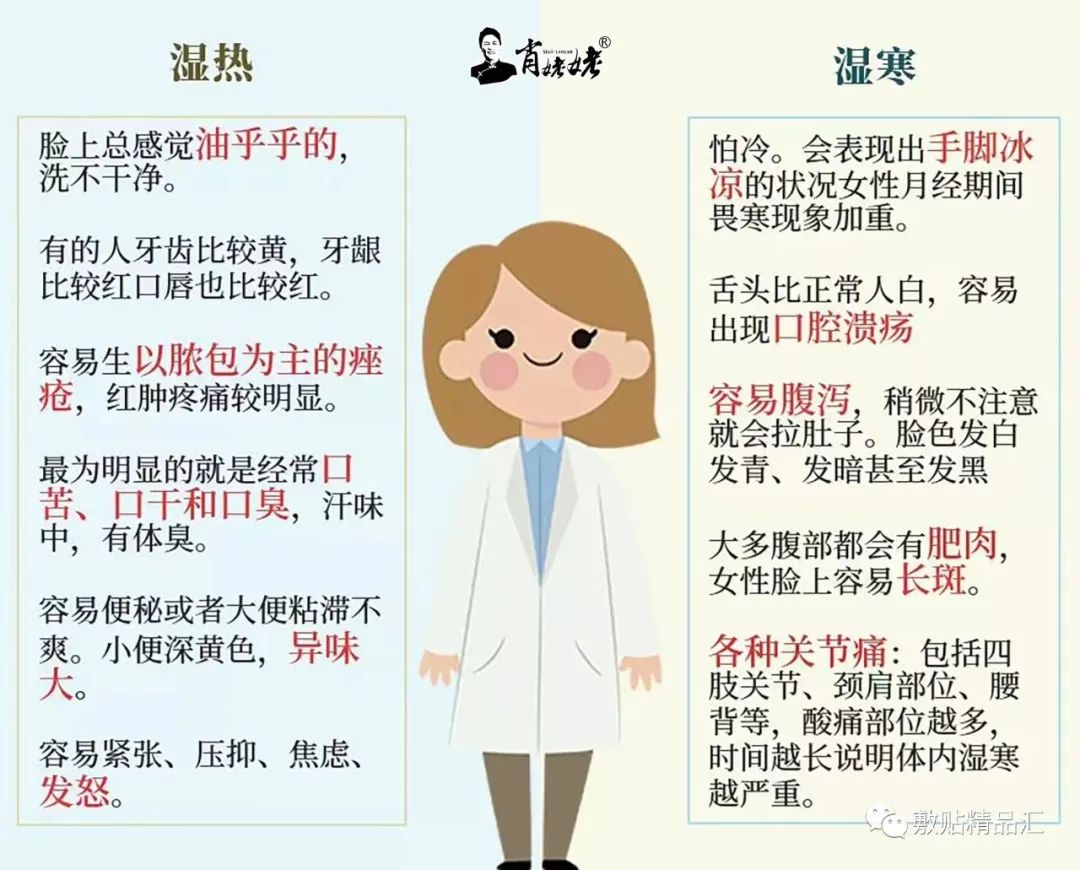
——END——

(↓↓ Click the image below to learn more ↓↓)

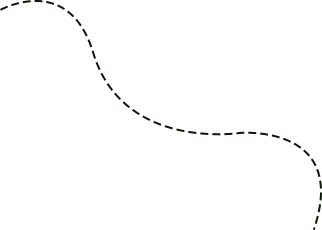

External Application and Bathing
Scan the code
to learn more
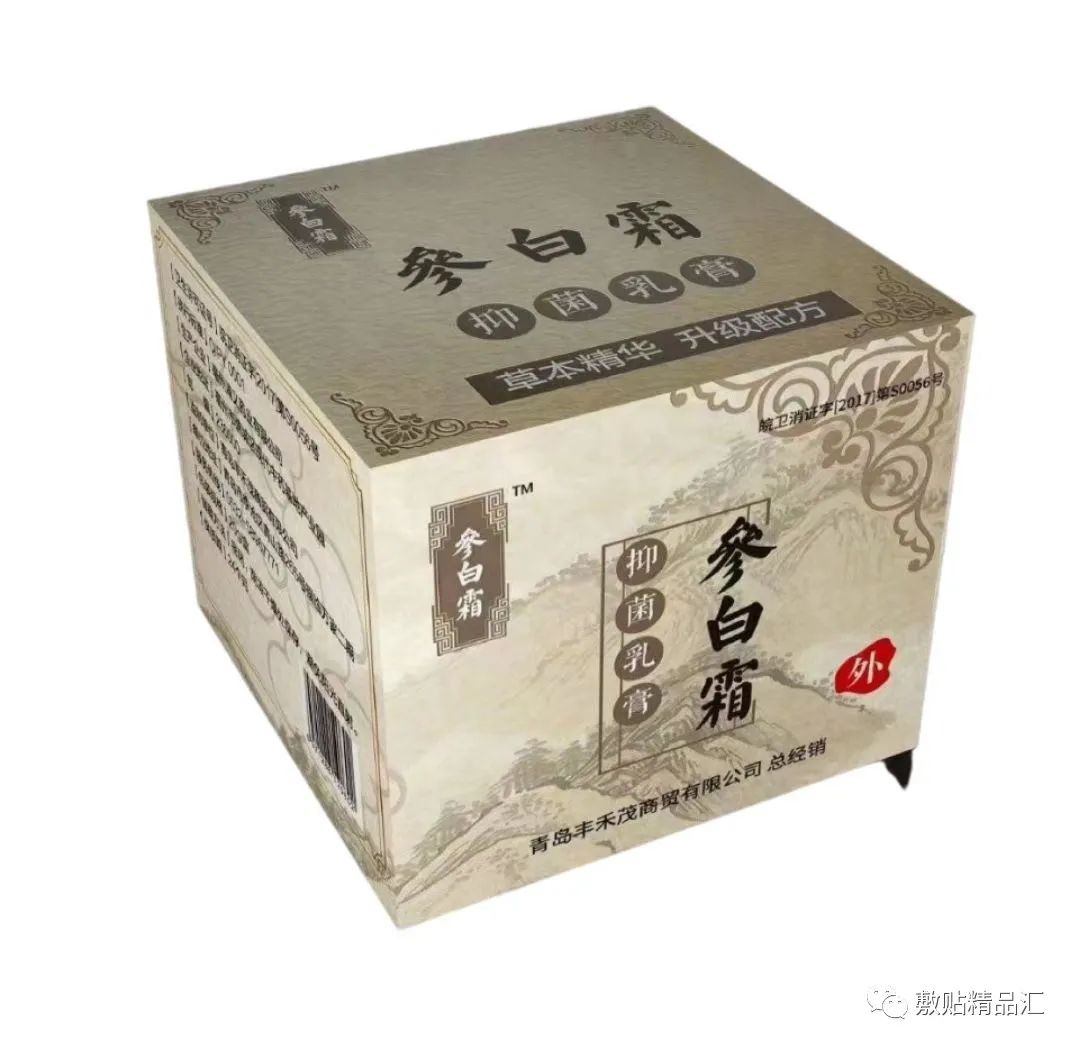
▼ – You can also see –▼
-
【Premium】: Full Course on “Foundations of Traditional Chinese Medicine”
-
【Premium】: Full Course on “Traditional Chinese Medicine Diagnosis”
-
【Premium】: Full Course on “Traditional Chinese Medicine Pediatrics”
-
【Premium】: Complete Collection of “Legends of Materia Medica”! (Illustrated, collectible edition)
-
Documentary Recommendation: Basic Anatomy (Teaching Video)
 Copyright Statement: The article is sourced from the internet; if there is any infringement, please contact us for deletion.
Copyright Statement: The article is sourced from the internet; if there is any infringement, please contact us for deletion.
Cooperation/Communication/Submission/WeChat: 13963982958
▼ For more exciting recommendations, please follow us ▼ Time for reading
Time for reading
External Application Premium Collection One-Stop Ordering Platform
Click below“Read the original text”to see more
↓↓↓

